1. Initially perform a test cut on the material. Peel back the cut vinyl and check the cut to ensure that the blade has just marked the silicone layer of the release liner. Then look at the reverse (printed) side of the release liner and check that an impression of the cut is not visible on the reverse of the liner. If such a mark can be seen, the cut is too deep and can will cause paper de-lamination when weeding as well as premature blade wear and damage.
2. It is important to remember that the choice of cutting weight and depth is dependent on the Vinyl type, with cast materials requiring the least pressure and speciality materials such as polyester and reflective vinyls the most. For general guidelines refer to the plotter’s manual. Certain speciality materials such as fluorescent and reflective vinyls and sandblast vinyl will require a greater blade angle and a slower cutting speed, as will materials with a polyester face Vinyl.
3. When weeding, short sharp snatches can often prove the cleanest method, particularly where text has sharp serifs. Correct cutting will save weeding time. Cutting and weeding can prove difficult in cold or hot conditions and it is important to weed the graphic shortly after cutting to avoid adhesive bleed that will make weeding difficult, particularly in hot conditions
The following is a recommended method for accurately aligning and applying sign vinyl decals.
1. Once the decal has been cut and weeded, and application tape applied, it can be offered up to the substrate and carefully aligned in its final position.
2. Apply a 50mm tab of masking tape to fix each end in place horizontally. Apply a third strip of masking tape vertically across the centre from top to bottom; the tape should extend above and below the decal and fix it to the substrate.
3. Start with the right hand side of the decal and cut or tear the 50mm strip of masking tape, leaving half on the substrate. Turn the right hand side of the graphic back on itself. Peel away the silicone release liner, cutting it at the centre point where the vertical masking tape fixes the decal to the substrate, and discard. When peeling decals away from the silicone release liner always try to keep them as flat as possible and peel back the release liner towards you. This will reduce the chance of damage to fine details or serifs.
4. The first half of the decal can now be lightly applied by holding it taught and using the two parts of the 50mm masking tape tab to align it perfectly. Squeegee down firmly.
5. Remove the vertical strip of masking tape and repeat for the left hand side of the decal.
6. Finally remove the application tape by peeling away at 45 to the direction of the text and 180 to the surface.
7. Air bubbles can be removed by puncturing with the tip of a scalpel.
8. This method of application can be modified for large graphics (in excess of 2m). Apply vertical strips of masking tape at two, three or more intervals. Cut the graphic half way between these points to form smaller panels and proceed as described above.
In cold conditions vinyl can become brittle and harder to cut, thus requiring unnecessary adjustment of the cutting depth. It can also make application difficult, as the initial adhesion of the vinyl will be reduced and the time taken for the adhesive to cure completely will be longer. The recommended application temperature for applying vinyls using a ‘dry application method’ is at least 10°C and for a ‘wet application method ’ is at least 17°C. Application in temperatures below 5°C is not recommended.
When applying vinyl graphics to a vehicle in cold weather always try to work indoors and raise the temperature of the vehicle by using a fan heater inside with the vehicle doors open. When this is not possible, for example an exterior application in winter conditions, it is very important to make absolutely sure that the adhesive has established a good bond to the substrate.
The service temperature range stated in the technical data sheets for each type of vinyl is the recommended temperature when in use.
There are a number of precautions to be taken when applying vinyl to glass.
1. Adhesion can be a problem in cold conditions, areas of high moisture, and where the glass has been cleaned with silicon based window cleaners. Use isopropyl alcohol to clean the window, and ensure the surface is warm before attempting application. With a wet application leave the graphics overnight before removing the application tape.
2. Avoid covering the windows with large areas of dark coloured vinyl. The vinyl can cause prolonged heat absorption and retention and can cause the glass to crack or explode. This is particularly of a concern with laminated glass, double glazing and wire glass, and when applying large areas of dark vinyl to plate glass. Areas of partial shading can cause it to crack. Toughened glass is a low risk. The stress levels created in the glass are determined by its dimensions, the type of glass, orientation, colour of vinyl and a number of other factors so it is important that the installer determines whether applying the vinyl to glass is appropriate.
3. Do not apply vinyl between two layers of glass.
4. Self-cleaning glazing finishes have a low energy coating that makes vinyl application very difficult, in partiucular with a wet application. Establish if the glazing has this or any other special coating.
Most plastics do not generally present a problem for the application of vinyl. However certain types of plastic substrate may present a problem as follows.
1. Flexible PVC’s such as banners and vehicle curtain sides gain their flexibility from the use of plasticizers, which are prone to migration, causing distortion of applied vinyl graphics. Use MetaFlex for application to banners, or curtain grade Vinyl for curtain sides.
2. Polycarbonates are prone to out-gassing and this gas can become trapped underneath the vinyl, forming unsightly bubbles.
3. These are ‘low energy’ plastics, and adhesion may be limited.
4. GRP can continue to outgass, causing vinyl graphics to bubble - check to ensure that the material is completely cured. Also ensure that the wax Vinyl used as a mould release agent is fully cleaned off.
5. Prepare the surface well enough to provide good contact: Potential Issues are whether there is a white Vinyl of zinc corrosion on the surface that should be cleaned off, or whether it is new enough to have an chemical protective coating still on it from the manufacturers.
Vinyl can be applied to wood, taking into account some precautions. The wood must be sealed, by paint or primer. It must be a smooth flat surface - the grain in wood can cause adhesion problems if it is too pronounced. Ensure that any paint is correctly applied to avoid the vinyl pulling the paint off the wood. Smooth timber surfaces such as MDF can have a low surface energy, so it is recommended to test a sample.
Emulsion painted wood or brush pained wood will give lower adhesion than painted steel or glass, due to the emboss and type of finish, and this should be taken into consideration when applying digital prints, which can also suffer lower adhesion levels due to the solvents. We recommend testing a sample first.
Most plastics do not generally present a problem for the application of vinyl. However certain types of plastic substrate may present a problem as follows.
1. Flexible PVC’s such as banners and vehicle curtain sides gain their flexibility from the use of plasticizers, which are prone to migration, causing distortion of applied vinyl graphics. Use MetaFlex for application to banners, or curtain grade Vinyl for curtain sides.
2. Polycarbonates are prone to out-gassing and this gas can become trapped underneath the vinyl, forming unsightly bubbles.
3. These are ‘low energy’ plastics, and adhesion may be limited.
4. GRP can continue to outgass, causing vinyl graphics to bubble - check to ensure that the material is completely cured. Also ensure that the wax Vinyl used as a mould release agent is fully cleaned off.
5. Prepare the surface well enough to provide good contact: Potential Issues are whether there is a white Vinyl of zinc corrosion on the surface that should be cleaned off, or whether it is new enough to have an chemical protective coating still on it from the manufacturers.
Vinyl applied to factory finish vehicle paintwork would not be at risk of lifting the paint on removal of the graphics. Because of the variability of re sprays however, it is not possible to guarantee that vinyl will not lift the paint. Where vinyl is applied to a vehicle, the vinyl under the paint will be free from fading, so removing the graphics after time may show an impression of where the graphics have been.
Sound painted surfaces are generally suitable for the application of vinyl although the paint must be fully cured before application. For vehicles a general guideline is to allow at least 5 days after painting before the application of vinyl, although this may be longer if the initial coats of paint have not been allowed to cure before the next coat applied.
Two pack paints on vehicles provide a more stable surface than cellulose paints, as the latter will continue to give off solvent whilst hardening, and this solvent can become trapped under the vinyl causing bubbling. A test application in a small area is recommended if you have any doubts about the quality of the paint finish.
Application to Painted Surfaces - Emulsioned Walls
Emulsion painted surfaces such as plastered walls will give lower adhesion than painted steel or glass. Digital prints can also suffer lower adhesion levels due to the solvents to make successful application onto these surfaces even more tricky.
We recommend using vinyl with a high coat weight on emulsioned walls. Alternatively, paint the wall with an eggshell finish paint, which provides a good key to most vinyls. Test a sample first.
The paint must be well keyed into the plaster to prevent it lifting on removal of the vinyl afterwards.
Vinyl can normally be applied to boats, for use below the waterline, however it is very dependent on the type of boat substrate, the condition of it, and the method of application.
It is important when applying the vinyl that the adhesive has cured to the surface, which is normally 36 hours though depends on application conditions. Particular care should be given to make sure the surface is clean, dry and free from contamination, and to sure vinyl edges are stuck. See also considerations for painted surfaces, and different types of plastics. None of the Metamark products are suitable for inflatable boats.
For application to rigid surfaces, Cast vinyl such as MD7 is the most suitable because its conformable and therefore acheives best adhesion, and is most resistant to the accelerated weathering a boat experiences. Calendered Vinyl such as 7 Series or MD5 is suitable for smooth flat or slightly curved surfaces. All digital prints must be overlaminated.
Walls are difficult surfaces to adhere to. Painted walls, or ones with wall coverings can require a product with a 'high grab' adhesive, as they often have an embossed or textured surface finish and standard vinyl will not stick. Walls within retail or exhibition environments can be subject to heat from lighting which can weaken the bond.
Another consideration is when applying to emulsion painted walls. Emulsion paint is a low energy surface, though if the tack is sufficient to adhere to the surface it can take the paint off on removal. Metamark does not currently offer a product with a 'high grab' adhesive (high coat weight).
When wishing to apply vinyl stickers to work safety helmets or motorcycle helmets it is necessary not to compromise the integrity of the helmet. As such it is vital to refer to the manufacturer of the helmet for their guidelines as to what can and cannot be applied. Further, do not obscure CE or similar markings on the helmet. Metamark does not offer a product approved for use on helmets.
Metamark calendered or cast vinyl's that have a solvent based adhesive, such as Metamark 7 Series may be used for under water applications with the following guidelines.
1. The surface must be a smooth, flat 'high energy' surface. For compound curves use a Cast vinyl, such as MD7.
2. Apply the vinyl using a dry application method to a clean dry surface at +10'C, and allow 36 hours to cure before submersing in water. Squeegee all edges carefully, and the use of gentle heat over the graphic will improve the bond.
3. If the vinyl is applied with a wet application, allow sufficient time to fully cure before submersing in water.
4. If the graphic is exposed to high water flow, such as the leading edge of a graphic on boat hulls, then gentle heat may be used to improve the bond around this area.
5. For Digital media, ensure graphic is overlaminated to protect the print. For coloured vinyls, metallic vinyls will have reduced durability in salt water conditions.
Few applications capture the imagination like a professionally designed and applied vehicle wrap. Now in partnership with Roland DG, Metamark is pleased to announce its new 2 day Vehicle Wrap Course, held at Roland’s state of the art new Academy at Walsall College. The course covers the theory and design of vehicle wrapping with Metamark’s MD7 cast vehicle wrap vinyl and includes a full day of hands on wrap training.
All Metamark digital media is manufactured and packaged under stringent conditions, to ensure trouble-free printing, and it is important to follow a few basic rules when storing and handling media.
When the media roll is not being used, always store it either vertically, or suspended on the plastic packaging caps provided. If the roll is stored resting on its side, or left on the aluminium rollers on the back of the machine overnight, it can cause pressure marks, or 'media bruising', resulting in colour variations in the print and often confused with other banding problems.
Always keep the roll free from dust and contamination by using the polythene sleeve provided when it is not being used. Do not touch the Vinyl itself as oils from the skin will transfer to the media and may show as marks in the print. If the roll does get contaminated, cut off the outside layer before feeding into the machine to avoid this contamination transferring onto the printer.
Keep the roll out of direct sunlight. The roll must be at the correct temperature (+10°C to +30°C) before attempting to print, as the heater settings will not compensate for a roll stored in too cold conditions. Often, a roll will need to be used within hours of being delivered in, so be aware that it may still be cold from overnight storage at the courier company. If media is stored in damp conditions, moisture on the Vinyl can cause spots in the print, while moisture within the liner will cause it to ripple as it dries out, causing 'head strike'.
One main differences between application of solvent inkjet printed vinyl and of unprinted computer cut vinyls is that once the media has been printed it will retain some of the solvents from the ink. These excess solvents will soften the media and also weaken the adhesive. As such, it is important to leave the print between 24 and 48 hours before application. Whilst in some instances this may not be practical, it is particularly important when applying to heavily curved surfaces, for vehicle wraps, or onto cold glass.
When performing a 'print and cut', such as creating labels, if the media is cut soon after printing it is possible that it can curl up, due to the solvents within the adhesive. We recommend MD-P for this. To avoid this, either allow 48 hours before cutting if the cut runs into the ink bleed, or allow a white border around the label.
Before applying any vinyl to a surface always ensure that the surface has been cleaned with isopropyl alcohol. As Metamark vinyls all benefit from a solvent based adhesive, they can be safely and easily applied with a wet application, or using a laminator.
When choosing a self adhesive vinyl, when appying a calendered vinyl to curved surfaces should be applied unstressed. Acast vinyl which will accept gentle warming and stretching to conform to the surface contours. For deep compound curves, cut the Vinyl.
Metamark MD5 - Where to Use?
For flat or slightly curved panels.
Lay unstressed in gentle recesses. Do not use heat.
Do not use for deep channels or compound curves.
Taxi Wraps have been achieved using liquid laminate.
Overlaminate with MetaGuard 700.
Metamark MD7 - Where to Use?
Ideal for full commercial vehicle wraps.
For compound curves, channels, rivets.
Can be conformed using heat. See full instrcutions below.
Overlaminate with MetaGuard 900.
Metamark MD7 high performance cast vinyl is developed for vehicle wrapping and the challenges of complex curves, recesses and rivets. It allows application with the use of heat to conform the product into the panel moldings of the vehicle, where calendered vinyls would otherwise be unsuitable.
Successful vehicle wrapping is a skilled application that requires correct techniques to be used by the installer, as well as an understanding of the technical limits of product. The following is a basic guide, but we would recommend full training.
Vehicle Wrapping with MD7 - Guidelines
To ensure long term performance it is important to be meticulous with the preparation and application as any part of the process can cause localized weak points and ultimately the application to fail. Adhesion is vital, and over stretching of the Vinyl can cause the application to fail - the product will withstand stretching, which consequently reduces adhesion at this point.
When carrying out a vehicle wrap, MD7 should always be overlaminated with MetaGuard 900 before hand to allow the Vinyl to be handled correctly during application, and to withstand daily wear, abrasion and acid from bird soiling. We do not recommend vehicle wrapping re-sprayed vehicles, or vehicle trim. Vehicle manufacturers water-based paints achieve slightly lower adhesion than solvent based paints do.
Where the project demands a more economical calendered Vinyl, MD5 high performance calendered vinyl can be used, but with care. This allows short term wraps to be done on applications that would otherwise be too costly.
Calendered Vinyls should be applied unstressed into recesses. Gentle heat can be used to help adhesion but should not be used to distort the Vinyl as they will be prone to pulling out of recesses.
Always chose a compatible or matched overlaminate to ensure mutual weathering and avoiding tunnelling or delaminating. Allow sufficient time (24-48 hours) for the print to dry before attempting to overlaminate, and ensure that the media and overlaminate are at similar temperatures.
For best results use a laminating machine. The product is suitable for cold lamination, though it is recommended to apply nominal heat (30'C) to the top roller to minimise 'silvering'. All Metamark overlaminates have a solvent-based adhesive* to ensure trouble free application whether applying wet.
To avoid tunnelling and delamination, avoid rolling tightly overlaminated prints, particularly when matched laminates are not used. *Except MetaGuard MGE
The Metamark Vinyl Floor Graphic System should only be applied as a two part system, using the recommended overlaminate, and base Vinyl. The scuff resistant overlaminate is warranted for use in public areas, for internal use only.
When applying, enure the floor surface is clean from contamination, dust free, and any painted surface is sound. The surface must be sufficiently smooth. It is best to leave an overlap of ovelaminate around the print, which reduces the effective edge thickness, while also increasing the edge adhesion. Make sure that the edge of the vinyl is fully adhered to prevent them later lifting.
Where there is the potential for any liquids to be used in the area that could contaminate the Vinyl, the end user should satisfy them sleves that the material is suitable.
The products in the Digital range have been specifically developed for Solvent and Eco Solvent Plus Inkjet printing and Metamark has a wide range of Speciality Digital Vinyl products including Reflective, Polish and Etch Vinyl. We do not recommend printing on our Sign Vinyl products. A couple of common examples are shown below:
Brushed Aluminium: This product has a clear top coat Vinyl in its construction. This Vinyl can delaminate with the heat from a Solvent printer.
Coloured Sign Vinyls: While it can be possible to achieve good results printing onto coloured Sign Vinyl ranges, such as Metamark 4 Series and 7 Series, it can often be the case that the colour reproduction is poor as solvent inks are generally not sufficiently opaque.
Solvents from the printing process can cause problems when performing print and cut graphics such as labels. The solvents weaken the adhesive and soften the Vinyl, and can cause edge curl on the graphic.
To minimise the problems:
1. Always allow 24 hours for the solvents to gas off between printing and cutting, or overlaminating. This will require you the use of registration marks to re align the graphic in the cutter.
2. Use a thicker vinyl if possible. Metamark produces MD-P in white gloss and white matt which is a 100 micron Vinyl and better resists the solvents making the vinyl easier to work with.
3. Avoid cutting flush into the print if the artwork allows, leaving a 4mm border between then print and cut path.
4. When applying print and cut graphics to glass, ensure the glass is dry and above 10'C.
It is particularly a problem when cutting flush into the print of solid colours, on deep saturated colours, and when applying to low energy surfaces such as cold glass.
Preparation
1. Ensure that the glass is clean, using warm soapy water, then with a degreaser such as isopropanol (or methylated spirit) and a lint free cloth. Hardened debris can be removed with a blade flat against the glass. Clean the edges to avoid dirt being drawn under the Vinyl. If it is not possible then cut the Vinyl a few mm short of the edges to allow a gap.
2. Cut the Vinyl (and liner) exactly to the smaller of the two dimensions of the glass, and allow excess on the other dimension.
Applying the Vinyl
1. Align the Vinyl with its liner in place carefully in their final position, using tabs of masking tape, then apply a 50mm strip of masking tape to one edge to hinge the panel, on the top or one side.
2. All Metamark etch glass Vinyls can be applied 'wet', using a felt edged squeegee. Carefully remove the backing paper being sure not to get dust or debris onto the adhesive or glass. Wet the adhesive and the glass with a spray of application fluid. (500ml water / 2 ml washing up liquid / 5 ml meths).
3. Hold the Vinyl at 15° to the glass while squeegying across the Vinyl from the hinged edge first using firm movements. Trapped air can most easily be removed by lifting and repositioning the Vinyl while wet.
4. Once all the Vinyl is applied, expel remaining moisture by squeegying from the centre outwards.
5. The last two edges can be trimmed. Hold a sharp blade against a plastic squeegee into the edge of the glass, with the squeegee on the frame side and the blade on the glass side. Holding together run down the glass so as to use the squeegee as a guide.
Applying Cut Graphics
1. Where an application tape is used to align cut graphics, it is necessary to allow sufficient time for the application fluid to dry out before removing the tape. This can be 24 hours particularly on cold glass.
The Vinyl should be applied to the inside of the window. The window must be cleaned first, with a razor blade or steel wool. An ammonia solution can be used to remove old adhesive or hard to shift dirt since any blemishes will detract from the finished result. The window must then be cleaned with isopropanol and allowed to dry. It is best to ensure that the Vinyl is cut oversize. To align the Vinyl it can initially be aligned at the top edge using the ‘hinge’ method. The Vinyl is self-adhesive and supplied on a thin clear liner, which should be removed before application.
When applying the Vinyl use a wet application method to saturate the glass. Be aware that water around the edge of the panel will cause dirt ingress so avoid excess fluid towards the edges of the Vinyl. Squeegee the Vinyl by applying overlapping strokes from the top centre outwards in each direction and then repeat down the Vinyl. A felt squeegee is recommended to avoid scratching. Once applied the excess can be trimmed. This can be achieved by running a squeegee down the edge of the Vinyl at a 45º angle with a blade pressed against it.
UK Guidelines for use of Reflective on Road Traffic Signage
In the UK Class Ref 2 Reflective (High Intensity) is widely used for most unlit country road signage, however it is common to also use Class Ref 1 (Engineering Grade). In general the grade chosen is determined by the specifier. Refer to DFT reg TA 1981.
UK Guidelines for use of Reflective on Vehicles
DFT rules for the use of retroreflective on vehicles provides guidelines for the use of colours. Red can be used on the rear of a vehicle, amber on the side and any colour except red can be used on the front. Exceptions to these rules include use deemed as advertising, and for emergency vehicles. Refer to UNEC-104 regs for marking tape. These guidelines do not apply to fluorescent markings.
For emergency vehicles, the Police typically use Blue on the side, Ambulances use Green on the side and Fire use Red on the side. The authorities will specify the grade required.


















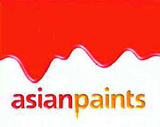
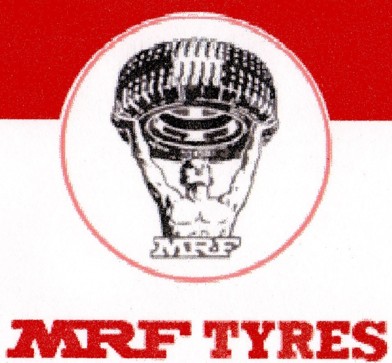





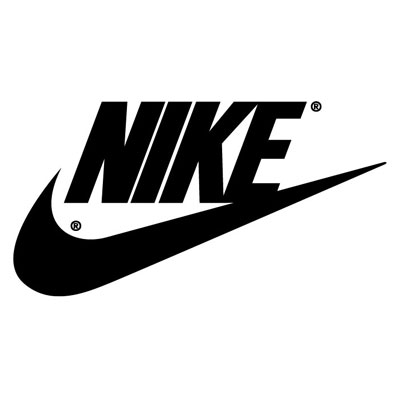
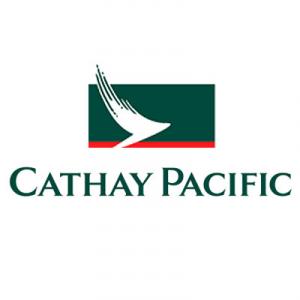

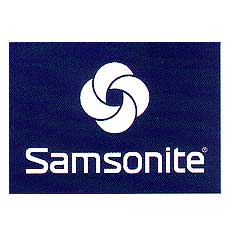
|
Copyright © Creative Sign Media. All Rights Reserved |